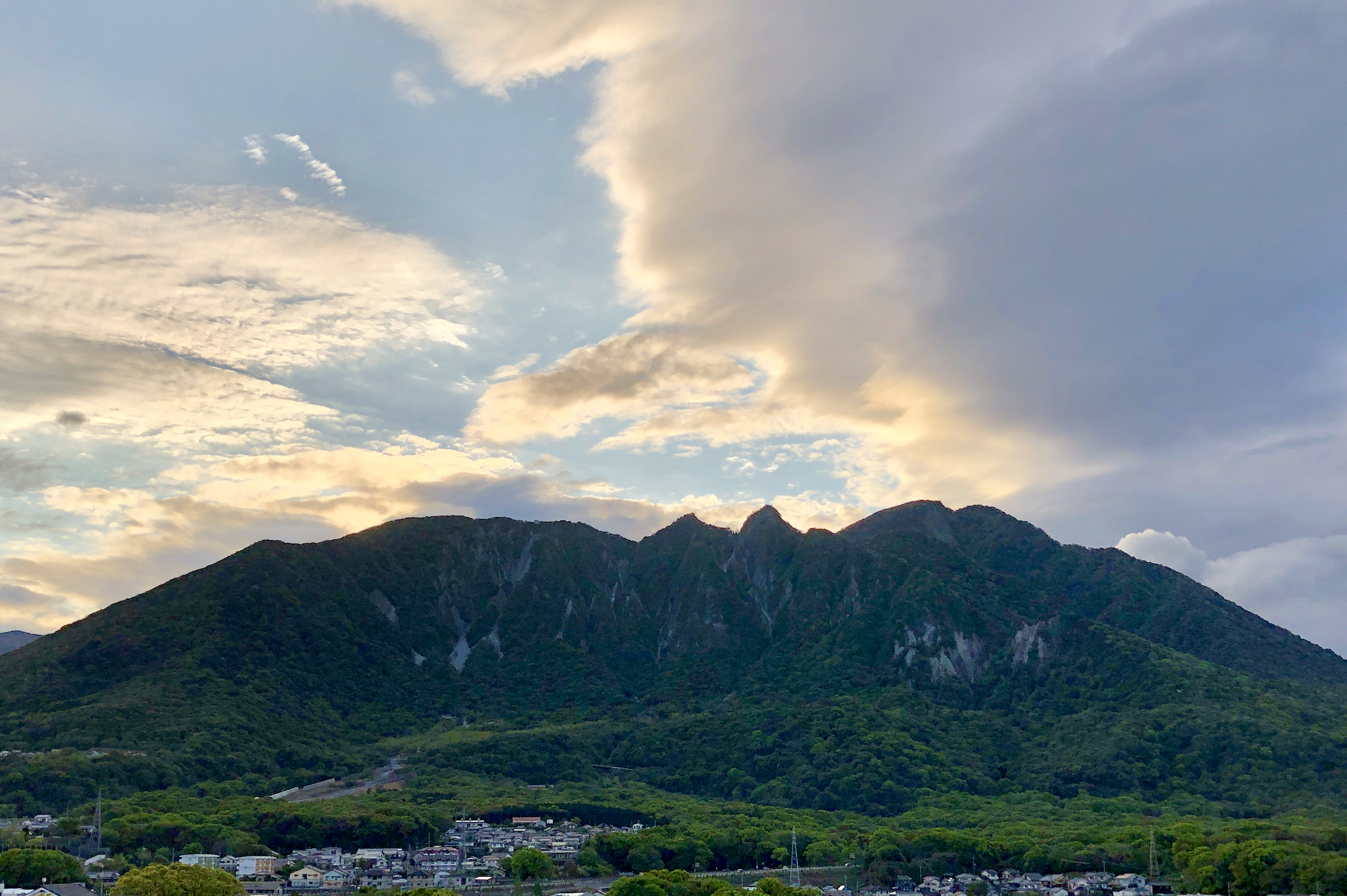The Shimabara Peninsula, a peninsula of a peninsula in Nagasaki prefecture, is just one of the fascinating places I travelled to in Kyushu, looking for “Kyushu Firsts.” This is where the “black samurai” Yasuke first landed in Japan in 1579 and is the location of Japan’s first printing press. The peninsula hosted many Portuguese Jesuits who built seminaries in the 16th century. It was the home of one of Japan’s Christian Daimyo and the site of a Christian rebellion (1637-1638). One could argue that Shimabara is where the Tokugawa shogunate’s finally set its resolve to isolate Japan from the rest of the world.
Jutting up from the center of the peninsula is the volcano-mountain Unzen. Farms cover the rolling hills, wrapped around the volcano like a thick green blanket. The rich volcanic soil produces strawberries and other produce, supplying the rest of Kyushu. Below the farms, at sea level, are the towns where most people live, some fishing the crabs of the shallow and muddy Ariake Sea. It is all quite bucolic, but there is a broiling history lying underneath.

In getting to Shimabara I had to cross the relative placid inland sea. After leaving Kumamoto city by taxi we drove for nearly thirty minutes towards the Ariake across the mud flat, parcelled into farms. The warm April weather and straight road made me dozy. But as we approached the ferry terminal we could see in the distance the far-off peak of Unzen. It looks so close!
I felt a somewhat ominous feeling to be slowly getting closer and closer to a volcano. (This isn’t saying much in Japan, wholly covered in volcanoes, especially in Kyushu which is also dubbed the “Land of Fire”). After boarding the ferry, a slick-looking express boat that takes only 30 minutes to make the crossing (the regular ferry is 60 mins), I sat where I could see the looming volcano through the window as we approached.

My mind cast back to 1792. That year, in exactly the opposite direction I was travelling, a massive tsunami crossed from Shimabara to Kumamoto killing thousands. Volcanic and tectonic activity caused the eruption of Mount Unzen — the largest eruption in recorded Japanese history — and triggered an earthquake collapsing Mount Mayu, the smaller neighbour of Unzen right above the city of Shimabara. Massive landslides poured into the sea, taking most of the town, and set off a megatsunami which crossed the Ariake towards Kumamoto. After hitting the shore there, it returned back across the sea to hit the Shimabara peninsula again! Overall, the disaster took nearly 15,000 lives.
I thought of this incident as I travelled its path 230 years later, and what Shimabara is like now. Currently the peninsula is home to only about 80,000 people living in three different regional cities. Here too is the typical and steady population decline of most Japanese rural areas. In the immediate post-war period about 230,000 people called Shimabara home.

Two hundred and thirty years is a long time to recover, but Unzen is still an active volcano. In 1991 an eruption saw pyroclastic flows come down the mountainside causing evacuations and killing 43 scientists and journalists. This event has had movies made of it, and I happened to be in Shimabara just before the 30 year anniversary ceremony of this newer disaster. Later I watched the proceedings on TV once I was back on Iki.
The 1991 eruption is memorialized in the Mt. Unzen Disaster Museum がまだすドーム (雲仙岳災害記念館), a fascinating facility for learning about volcanoes (and good for the kids!). One display uses glass floors to demonstrate how fast burning gases travel after an eruption — up to 100km/hr! — challenging you to try and dodge out of the way (spoiler: you can’t).
The main message of the museum is a pragmatic one: in the Land of Fire, we need to learn to live with volcanoes. This means good disaster planning and mitigation strategies, early detection systems, being well-trained for evacuation, and being mindful that where you live and work and sleep is also home to an active volcano. Living “with Volcano” reminded me of the Japanese phrase “with Corona,” and the adaptiveness we must embrace in changing the ways we live to be “with Climate Change.”
Over the period of a few days I drove all around and across the Shimabara Peninsula, to castle ruins, fancy European-style hotels, hot springs, looking at art, and even walking through some bubbling sulphurous hellscapes. It is a fascinating part of Japan to which I am sure to return.


